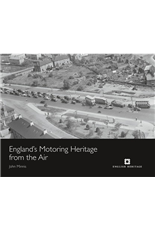The Forever Girl by bestselling author Alexander McCall Smith (hb, £16.99 978 1846972294)
is published by Birlinn next week. This is a brand new novel from one of
the world’s most popular authors. This moving love is the perfect gift for
Valentine’s Day and follows on from the great success of Trains and
Lovers, Alexander McCall Smith’s
previous stand-alone novel which sold 20,000 hardbacks in the first six weeks of
publication. This big-hearted and often heartbreaking novel about unrequited
love and the unexpected places it takes us. At the age of four, Clover chooses
her own name. Aged six, she falls in love with her best friend, James, with whom
she happily spends all her time. But in the adult world, things are not so
simple: at the same time that Clover’s mother finds she’s fallen out of love
with her husband, she realises that James’s father is interested in her. As the
children grow into adulthood, their connection becomes more complicated as well:
James drifts away from Clover, but she keeps him in her sights: she attends the
same college in Scotland and then follows him to London, Sydney, Singapore,
rebuilding her life in every city, hoping each time that James will see what he
is missing. As Clover and James and their parents, navigate their irresistible
but baffling mazes of emotion, we are given a beautifully realised tale about
how love, even if unrequited, can shape a life. There will be quite a bit of publicity for
this lovely new novel; Alexander McCall
Smith will be on BBC Breakfast TV on 4 February, and also will
be interviewed on BBC Radio 4 and BBC Radio Scotland. Features are
confirmed throughout February in the Yorkshire Post, the
Spectator, Woman magazine, the Daily Express, the Scotsman, and
the Mail on Sunday.
“If you like it, Beyoncé once sagely advised, put a
ring on it. Online these days, it’s more a case of: if you like it put a hashtag
on it, abbreviate it, re-tweet it, or Instagram the shit out of it.” How true,
how true, and I’m pleased to say that The Totes
Ridictionary from Plexus (978-0859655118) is still selling
like crazy – or should that be cray-cray. Lots of great reviews on and off line
– two of which you can read here from Aitfa's
Bookshop and also from The Love of a Good Book. Like the reviewers, I like the
Twistorical Romance section where the author Balthazar Cohen imagines what would happen if
history and literature’s famous couples were on Twitter; and also the vintage
film stills with added contemporary slang speech bubbles. Here’s an
example:
Rocks Off: Fifty Tracks That Tell the
Story of the Rolling Stones by
Bill Janovitz is published next week by
Polygon (978 1846972997 pb, £12.99) . This terrific new history of the
band tells their story through expert and detailed accounts of fifty of their
most vital recordings, providing both valuable details about the sessions
themselves and the eras in which they were created. It is a wonderful and unique
history of the Stones which serves as both an introduction to newcomers and a
welcome addition for Stones completists. As Booklist said, “His vibrant
description of Gimme Shelter alone is worth the price of the
book”.
And here they are - singing
that very track - Gimme Shelter.
The Bluffer’s Guide to
Chocolate (pb, £6.99 978
1909937048) by Neil Davey is the brand
new title published in February in the 5-million-copy bestselling Bluffer’s
Guide series. Neil Davey is widely
published in food magazines and the national media and is followed on Twitter
@DineHard by in excess of 8,000 followers. You can also read his blog at www.thelambshankredemption.blogspot.com. If "life is
like a box of chocolates" then this Bluffer's Guide
to Chocolate is just what you need to help you "work, rest and play."
And its publication is perfectly timed
for Valentine’s Day – and then Easter. You can order The Bluffer's Guide to Chocolate here. Hmm,
thinking of work rest and play gives me reason to muse on what would be the best
chocolate ad of all time?
Could it be the crumbliest flakiest girl do you
think? But did you prefer her in the
bath, in the sunflowers or possibly in a
canoe?
Or would you rather watch the
airhead gorilla Phil Collins?
Or do you feel that one
finger is just enough?
Or do you prefer the idea of some black
clad nutter breaking into your house and leaving a frankly somewhat
sinister picture of himself on your bed?
Personally I rather like this newish ad which uses
CGI to show us footage of the incomparable Audrey eating a Galaxy –
although I find it pretty hard to believe she tucked into them on a very regular
basis!
Fuzzy-haired, neurotic Catrina Davies is devastated when the love of her
life, Jack, leaves her to go surfing on the other side of the world. Trapped in
a dead-end job and torn by his departure, Catrina dreams of running away. But
how do you run away when you’re fl at broke? Luckily, her friend Andrew comes up
with a plan: they’ll get a van, turn it into a camper, and busk their way from
Norway to Portugal
Copies of England’s
Motoring Heritage from the Air by John
Minnis (hb 978 1848020870
£35) published by English Heritage ( have just arrived in the office –
this is a very handsome looking volume which provides a graphic account of how
England has changed over the last 90 years through the impact of road transport
on the landscape. Most of these
photographs, from the Aerofilms collection, have never been published before.
When Aerofilms fliers first went up in the skies in 1919, they captured a
country that had more or less been preserved in aspic in 1914. What we are
looking at in many of the earliest photographs in this book is essentially
Edwardian England, and this fantastically illustrated book shows just how
radically things changed over the ensuing half century. We trace the outward
expansion of places brought about by the availability of the car: the new
suburbs and ribbon development. We see how new arterial roads came into being to
meet the needs of motor transport and how the centre of cities start to be
rebuilt to accommodate it. We see how the car encouraged more people to go
further afield for sport and pleasure: to the seaside, the races or to new forms
of attractions such as the amusement park in the country. And we see how public
transport changes over the period from trams to buses with the advent of new
facilities such as bus stations. The photos and text take us right from
England
Look out too for Aerofilms: A History of Britain Britain
For a wonderfully nostalgic reminder of how England
has changed, you could do a lot worse than look at the films of cinematographer
Claude Friese-Greene who travelled across the UK in the 1920’s with his
new colour film camera. His trip ended in London
That’s all for now
folks, more next week!





.jpg)



































